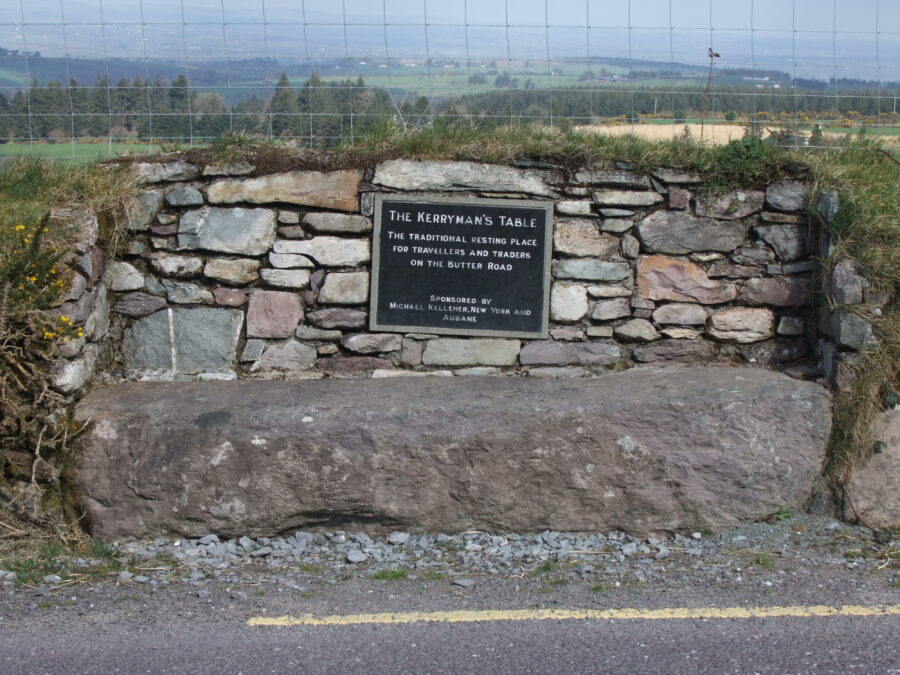
Kieran’s Our City, Our Town Article,
Cork Independent, 2 November 2023
Extracts: The A-Z of Curious County Cork
My new book, The A-Z of Curious County Cork is available in any good bookshop. Published by History Press UK (2023) the book has been born out of my own personal curiosity for many years now to venture off the main roads of County Cork to explore the curiosities of cultural heritage in County Cork. This week’s column shares more extracts from the new book.
Petticoat: Petticoat Loose was a term synonymous with all that was ghostly and superstitious in County Cork and south Munster in the nineteenth century. The spirit is still spoken about in folklore in rural parts of the county. The legends of Petticoat Loose were most plentifully told by horse and carmen, or cartmen, of butter firkins, or barrels. The stories differed in many respects, but one thing they had in common was that all were agreed the apparition was evil.
It usually appeared in the guise of a woman who cut the ropes that bound the firkins of butter. It was known to shriek demoniacally as the firkins rolled about the road, especially when the night was pitch black or on the most rural and winding of roads. One such story has prevailed in folklore and is connected to an east Cork location.
Sometime in the late nineteenth century, a Cork man whose name was James was employed as a firkin transporter. In summer, his principal trade was in the carriage of butter. In spring and winter, his work was supplemented by any other work he could get to keep his men and horses employed.
In winter, James acquired a lucrative contract for the drawing of sand to the city. This necessitated his carts leaving Cork at night, reaching the seashore by dawn, then loading and returning to the city. The horses rested during the day and the carts with fresh horses and drivers were employed in normal work in the city. This schedule appeared very satisfactory in the beginning, but gradually fell apart. James, enquiring on the reasons, discovered the men had been terrified by apparitions at a certain part of the road on several occasions. The horses sensed as much as their drivers, as he could see from their condition when they arrived in the mornings.
After consideration, James decided that he would lead the expedition himself and the men agreed. Accordingly, after nightfall, they started. James, in the leading butt, had provided himself with a hazel wand, a bottle of holy water and his rosary beads.
Eventually, they arrived at the part of the road that was designated haunted and it certainly looked forbidding. On both sides were the high walls of a demesne, uninterrupted by gate or wicket. High trees shadowed the road, with the wind whistling through the bare branches.
Shortly after James had entered this part of the road, an object bounded onto the road in front of James’ horse. It appeared to be a large black dog, blacker than the surrounding darkness.
Where it had come from, James did not know. It stood on the road in front of the horse and bayed balefully. The horse trembled with fright. The dog soon disappeared; its place being taken by another, and larger, black like the first, with two red glowing eyes and a menacing growl. It caused the horses to rear and plunge and gave James and his men great difficulty in keeping them under control.
The larger dog also disappeared and the horses quietened down. James and his party moved on. They were coming towards the end of the gloomy avenue, when a huge hound as large as a mastiff appeared on the road and its menacing bay reverberated through the avenue, throwing the whole party into confusion. Horses reared and plunged, drivers leaped from their carts with mingled prayers and cries of terror, endeavouring again and again to restrain the terrified animals.
At this juncture, James saw fire upon the road, gradually getting larger and brighter. Such a fire as he had never before seen, bright red and blue rains alternating and lighting up the road with the three hounds, now silent. In front of the fire stood a woman, the details of her dress and appearance becoming clearer at each moment. On the further side of the fire were a number of women, not so distinctly outlined. Hastily James drew a circle with his hazel rod round his horse and cart, sprinkling it with holy water. He stood within the circle and called on and continued praying until daylight, regardless of what he could see or hear.
The woman came towards James, stately and graceful, and with a voice sounding like the tinkling of a silver bell, invited him to come to her. But James remained solemnly silent, praying fervently. She approached nearer and although the voice sounded friendly and seductive, the expression in her face was the opposite.
At the same time, James raised his crucifix. She leapt backward; the smile was replaced by a distorted grimace of hate, and the silver voice changed to a strident scream of an old hag and three hounds. Behind James rose the steady, fervent murmur of prayer from his petrified men. James demanded she depart. She eventually did, as quickly as she had arrived.
Caption:
1226a. Present day picture of the historic Kerryman’s Table, which was a famous resting place for farmers transporting firkins of butter, near Millstreet, County Cork (picture: Kieran McCarthy).